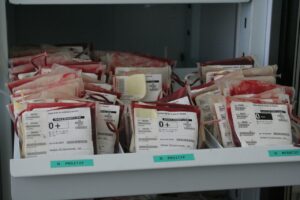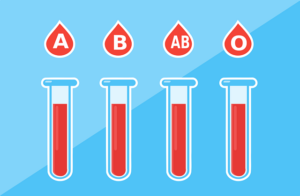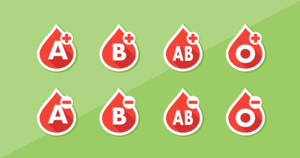
Published: 23 February 2024
O Positive blood, also known as O+, is a unique blood type. Not only is it the most common blood type, but it is also compatible with most other blood types. Let us further discuss why O Positive red blood cells are vital to maintaining an inventory of life saving blood products.
O Positive Blood Type Characteristics
First, lets do a quick comparison of the differences in red cell blood cell (RBC) surface antigens as well as antibodies present in the plasma between the different ABO groups :
Type O: Has no antigens on RBCs and has Anti-A and Anti-B in the plasma.
Type A: Has A antigens on RBCs and Anti-B in the plasma.
Type B: Has B antigens on RBCs and Anti-A in the plasma.
Type AB: Has A and B antigens on RBCs and no antibodies in the plasma.
As you can see, if an antigen is present on the RBCs of a person, then they should not have the corresponding antibody in their plasma (i.e. Type A person should not have Anti-A in their plasma). If they did have the corresponding antibody, those Anti-A antibodies would attack the A antigens, resulting in destroyed RBCs.

Compatibility
The lack of antigens on O Positive RBCs is what makes it so compatible with other blood types. There is no antigen for the Anti-A and Anti-B in the other blood types to attack when transfused, so the patient is able to safely accept the red cells and benefit from the additional oxygen carrying capacity.
Considering these special characteristics, O+ blood is compatible with all Rh-positive blood types, including O+, A+, B+ and AB+. Over 80% of the population has an Rh- positive blood type and can receive O positive blood1.
On top of this, O positive can also be given to some Rh-negative individuals (O-, A-, B-, AB-) in situations like Emergency Release or Massive Transfusion Protocol (MTP), as long as the recipient is either a male or a non-childbearing age female usually described as age 50 or older. This is because if they end up producing Anti-D after the transfusion, Hemolytic Disease of the Newborn (HDN) will not be a risk since this population is not planning on carrying a baby anyway.
Considering that 80% of the population is Rh-positive and that many Rh-negative individuals can also use O+ as well, the amount of the population that is able to receive O Positive cells is actually higher than 80%, likely closer to 90%. Its not quite at the 100% compatibility rate of the “Universal Donor” O Negative cells, but it is very close, and is crucial for every blood bank inventory to have on hand.
Blood Type Demographics
There are 8 main blood types which include: O Pos, O Neg, A Pos, A Neg, B Pos, B Neg, AB Pos and AB Neg. O Pos is the most common of them all, at 38% of the population2.
Race plays a big part in the distribution of blood types in the population. The race with the highest amount of Type O Positive is Hispanics at 53%, followed by Blacks at 47%, Asians at 39% and Whites at 37%3. Its easy to see that minorities play a crucial role in the O Positive blood supply.
There are regional variations, but regarding Rh status, about 85% of the population is Rh-positive and 15% is Rh-negative. So out of 100 Type O people, 85 of them will be O Pos and 15 will be O Neg, on average. This is why O Pos blood donors are so much more commonly seen than O Neg donors.
What Blood Types Can O Positive People Receive?

Type O people can only receive Type O blood. This is because Type O blood has both Anti-A and Anti-B in the plasma which can react with the A and B antigens on the RBC surface of Type A, B and AB donors, triggering a massive hemolytic transfusion reaction. Regarding Rh status, O Pos recipients can receive either O Pos or O Neg blood.
Low-Titer O Whole Blood
O positive individuals are the most frequent donors utilized to manufacture a component called Low-Titer O Whole Blood (LTOWB). This product provides red blood cells, plasma and platelets in a single bag, as opposed to three separate bags which is typical with individual component therapy.
Regular Whole Blood historically suffered from the limitation that the donor unit had to be type specific to the recipient, whereas with LTOWB, it is universal since it only uses Type O blood, doesn’t have A or B antigens on their surface and the plasma has Anti-A/Anti-B titers (concentrations) of less than 1:256. The inception of LTOWB has had a huge impact on Transfusion Medicine, particularly with the military and in emergency situations.
Other Type O Blood Group Facts
Studies have shown that recreational athletes with O type blood have better endurance performance compared to those with non-O blood group types4.
Type O people are less likely to experience disorders like deep vein thrombosis, pulmonary embolism, stroke, heart attack, heart failure, cholera, malaria and possibly COVID-195. A major factor of why Type O people have less clotting related disorders is due to their 25-30% lower levels of Von Willebrand Factor(vWF), a clotting protein which helps maintain hemostasis in the body6. However, this is a dual edged sword, because studies have shown that these lower baseline levels of vWF in Type O individuals have been associated with higher mortality in trauma patients experiencing hemmorhage7. Consequently, Type O patients have a higher risk of bleeding out than non-Type O patients.
Conclusion
O positive is the most common blood type in the world, making it an absolute critical component of every blood bank inventory. Aside from the transfusion aspect, more research has been giving further evidence of key advantages/disadvantages that Type O individuals may be predisposed to when compared to the non-Type O population. If one does is not aware of their blood type, they should determine it as soon as possible.
References
1,2. Why is Type O Blood so Important. (n.d.). Retrieved from American Red Cross: https://www.redcrossblood.org/donate-blood/blood-types/o-blood-type.html#:~:text=Type%20O%20positive%20blood%20is%20critical%20in%20trauma%20care.,due%20to%20its%20high%20demand
3. Facts About Blood and Blood Types. (n.d.). Retrieved from American Red Cross: https://www.redcrossblood.org/donate-blood/blood-types.html
4. Lippi G, G. G.-G. (2017, June). Influence of ABO blood group on sports performance. Retrieved from National Library of Medicine: https://www.ncbi.nlm.nih.gov/pmc/articles/PMC5497099/
5. Levine, H. (2023, February 21). What Your Blood Type Says About Your Health. Retrieved from AARP: https://www.aarp.org/health/healthy-living/info-2023/how-your-blood-type-affects-your-health.html
6,7. Takayama W, E. A. (2021, August 9). The impact of blood type on the mortality of patients with severe abdominal trauma: a multicenter observational study. Retrieved from National Library of Medicine: https://www.ncbi.nlm.nih.gov/pmc/articles/PMC8352974/











